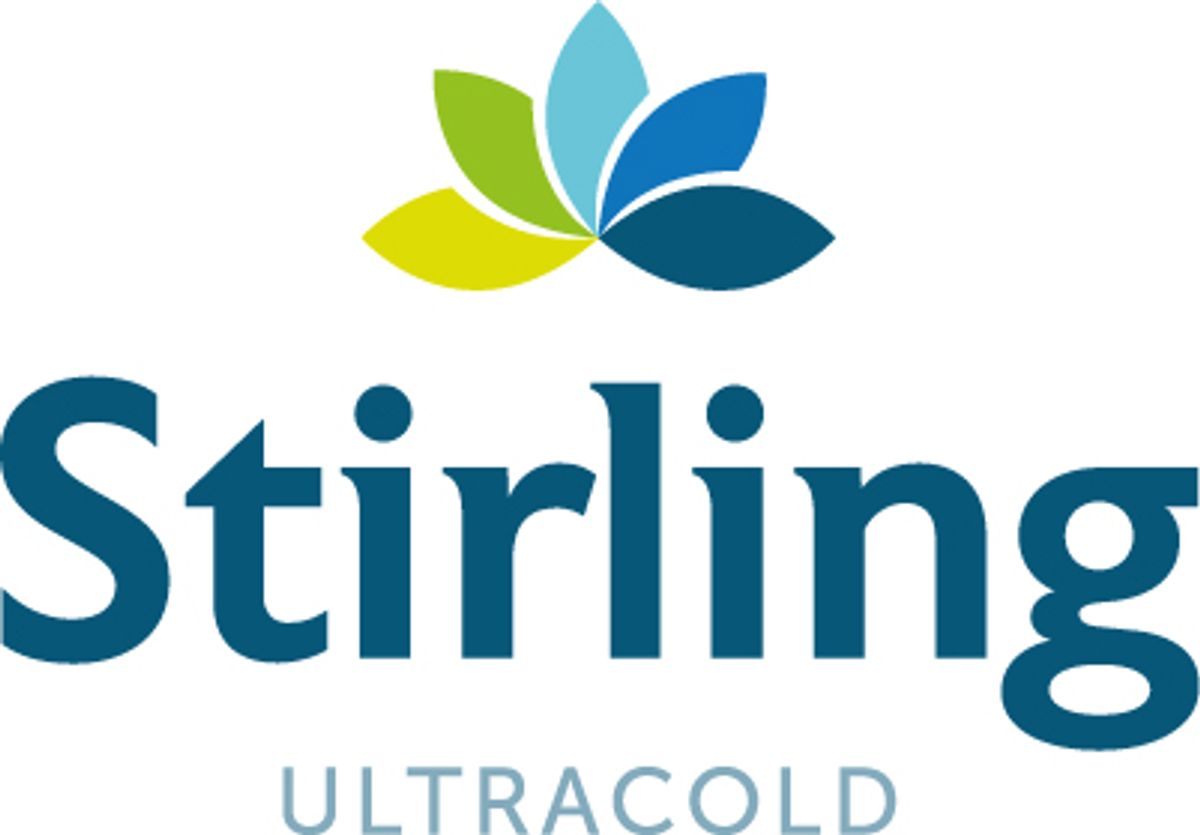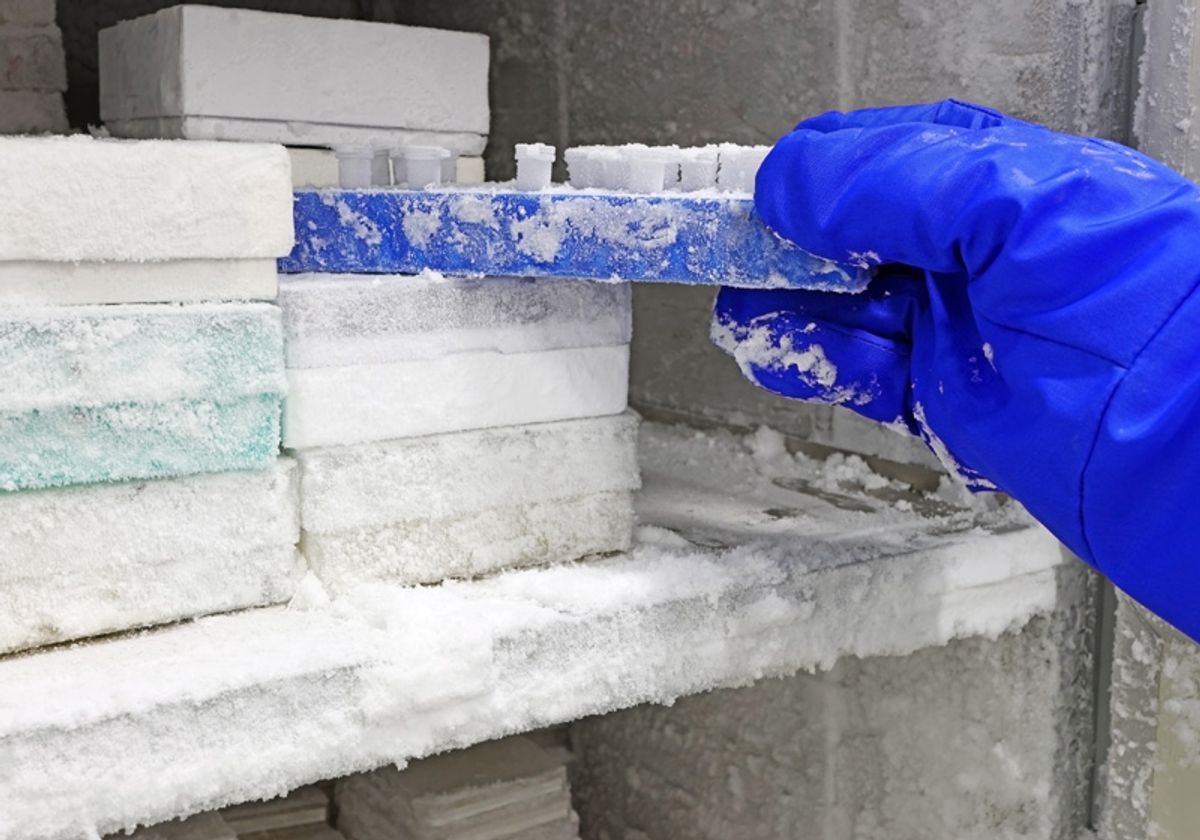Ultra-low temperature freezers (ULTs) are highly energy-intensive, with each consuming about 20 kilowatt-hours (kWh) per day.1 Efficiency certifications such as the ENERGY STAR® program provide standardized rating methods for laboratory-grade freezers but may not fully capture the diverse operational conditions of ULTs.2 Implementing sustainable cold storage requires researchers to consider various environmental impacts throughout ULT operational lifespans and go beyond freezer kWh per day ratings with well-rounded energy consumption solutions.3
Chilling Up to Sample-Specific Temperatures
A proven method for lowering the energy cost of ultracold storage is by chilling up or operating at warmer setpoint temperatures. Raising ULT freezers from -80°C to -70°C has been shown to reduce electricity consumption by 28 percent and prolong ULT freezer life by reducing compressor stress.1 Databases and research studies have demonstrated that this can be accomplished without risking sample integrity for a variety of biological materials, including DNA, RNA, cells, tissues, and blood plasma.4,5 In some cases, an even lower setpoint may be suitable. For example, DNA and RNA can be safely preserved in the short and long-term between -20°C to -40°C when processed in the correct storage reagents.3
Freezing Samples Heats Interior Spaces
By design, ULTs dissipate heat to keep their samples cold, but freezer energy ratings often do not account for how freezers influence heating, ventilation, and air conditioning (HVAC) systems.1,3 Chilling up is one solution, as is technology with optimized air flow design.1,3 Freezers that require less energy to maintain lower internal temperatures expel less heat and improved air flow minimizes room heating, thus lowering HVAC requirements to maintain room setpoint temperature and providing large carbon savings for ULT storage.1
Storage Capacity and ULT Footprint
The quantity of samples stored and their storage duration directly influences the volume and time needed for ultracold storage, which in turn impacts a laboratory's carbon footprint. To minimize carbon emissions, scientists can reduce the samples stored long-term.1 Additionally, optimizing space by storing more samples per freezer can reduce total energy consumption. Effective inventory organization and racking improves sample management practices, while careful consideration of storage capacity in ULT purchases can further enhance sustainability efforts.3
Go to the Source
Green laboratory initiatives must assess environmental impacts across multiple facets of an equipment’s lifecycle, including product manufacturing, energy consumption, water use, packaging, and end-of-life sustainability. Toward this end, third-party verification audits of Environmental Impact Factor (EIF), such as the Accountability, Consistency and Transparency (ACT) label from My Green Lab consider many sources of ULT sustainability.3,4
From natural refrigerants with minimal global warming potential to end-of-life recyclable materials, the Stirling Ultracold SU780XLE freezer has earned the ACT label from My Green Lab. The SU780XLE’s Stirling engine technology provides stable temperature performance across a range from -20°C to -80°C for flexible storage without the need for multiple freezer types.3 Its optimized air flow design enhances HVAC efficiency by directing heat away from work areas, and its slim format and high-density rack system maximizes capacity while minimizing floor space and energy use.3 Overall, the SU780XLE reduces the carbon footprint associated with sample storage by combining efficiency with sustainable practices, comprehensively addressing cold storage sustainability beyond energy consumption.3
- Graham M, et al. Roadmap for low-carbon ultra-low temperature storage in biobanking. J Transl Med. 2024;22(1).
- Purchasing energy-efficient laboratory-grade refrigerators and freezers. Federal Energy Management Program. Accessed September 25, 2024.
- Sustainable biostorage beyond the energy certification rubicon. Stirling Ultracold. Accessed September 25, 2024.
- Building a global culture of sustainability in science. My Green Lab. Accessed September 25, 2024.
- Bhattacharya S, Nissen PH. Reduce energy consumption in your laboratory – switch ultra-low temperature freezers from – 80 °C to –70 °C. A pilot study on short term storage of plasma samples for coagulation testing. Scand J Clin Lab Invest. 2024:1-4.

